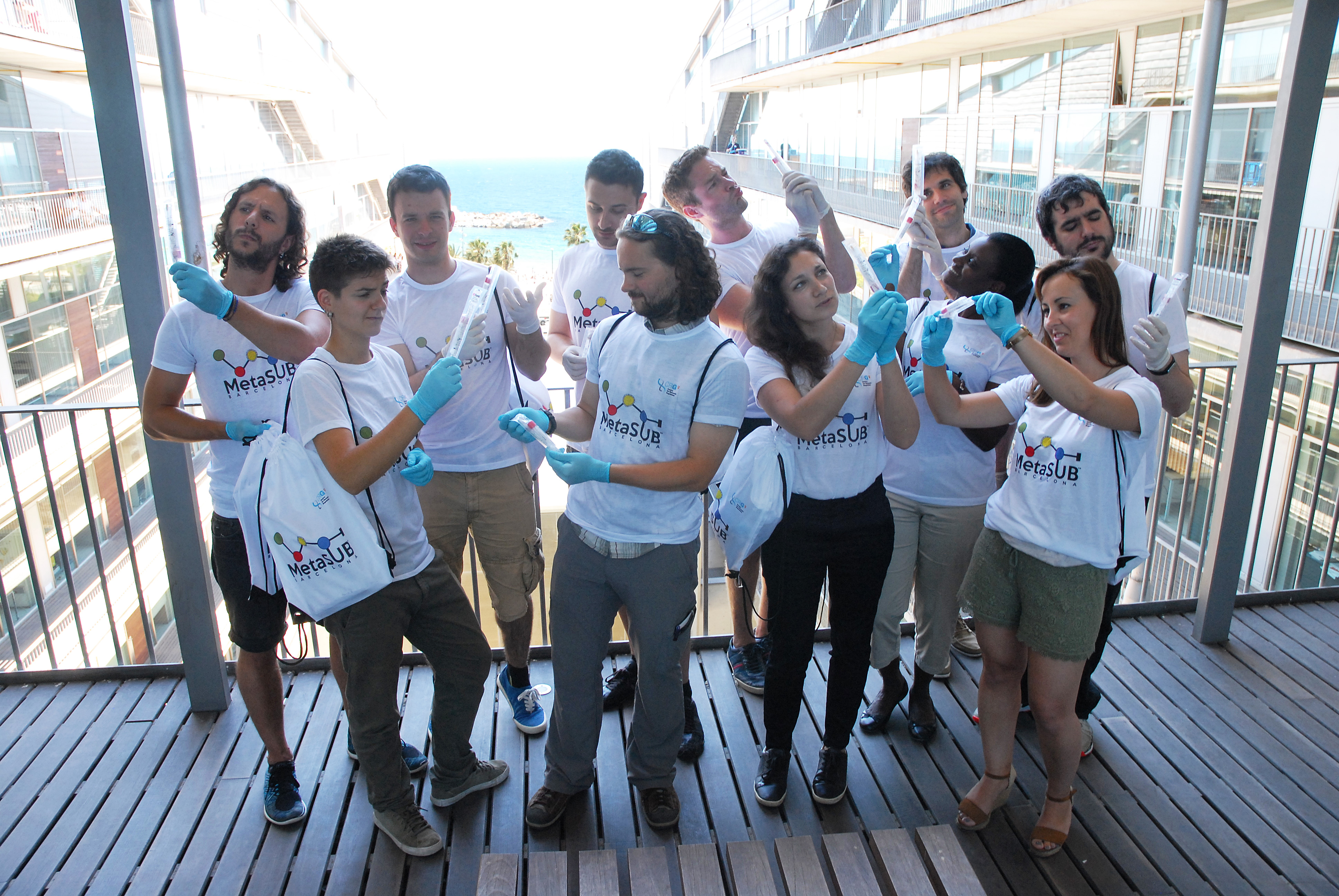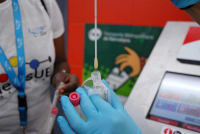 NEWS
NEWS
Mapping the subway's microbiome
PRESS RELEASE
- Barcelona takes part in the international research project MetaSUB, which aims to map the microbiome of public transit systems in 58 cities worldwide, including New York, Hong Kong, Paris or Sydney.
- Scientists at the Centre for Genomic Regulation (CRG) are contributing to this project by providing, processing, and sequencing samples from the Barcelona subway and also by leading the sampling processing working group. They standardized and improved the sample processing and sequencing protocols for all the laboratories participating in this project.
 Scientists at the Centre for Genomic Regulation (CRG) in Barcelona, Spain, have joined today the Global City Sampling Day of the MetaSUB research project. Started in 2013 in New York and led by Dr. Christopher E Mason at Weill Cornell Medicine, MetaSUB is an international consortium of laboratories to establish a world-wide “DNA map” of microbiomes in mass transit systems.
Scientists at the Centre for Genomic Regulation (CRG) in Barcelona, Spain, have joined today the Global City Sampling Day of the MetaSUB research project. Started in 2013 in New York and led by Dr. Christopher E Mason at Weill Cornell Medicine, MetaSUB is an international consortium of laboratories to establish a world-wide “DNA map” of microbiomes in mass transit systems.
“Bringing together scientists in dozens of cities worldwide in a real interdisciplinary initiative makes this project unique. We will be able not only to map the urban subway microbiome but to develop new standards for the metagenomics field and to optimize methods for all the steps within this project: from sample collection to data visualization through DNA/RNA isolation and sequencing,” explains Stephan Ossowski, group leader at the Centre for Genomic Regulation. The MetaSUB initiative is pioneering an unprecedented study of urban mass-transit systems and cities around the world.
Today CRG scientists lead by Daniela Bezdan, coordinator of the MetaSUB team in Barcelona, and Beth Mutai, a PhD student from Kenya, simultaneously collected microbiome samples in 13 subway stations. “Many new questions arise from this project, for example, how the microbiome changes according to the weather, the flow of people, the cleanliness of the station, or the materials of its furniture. Also, questions related to the city such as the neighborhood in which the station is located, the socio-economic level of its citizens, etc.”, says Bezdan.
“We consider the collaboration with research institutions a must. Thanks to the MetaSUB project we will deepen our knowledge on the subway’s microbiome, which will contribute to improve the journey of thousands of people in the Barcelona subway network,” states Eladio de Miguel, director of quality and environment at Transports Metropolitans de Barcelona (TMB).
The subway: a unique “ecosystem”
 Mass transit systems represent unique urban biomes, microbiomes, and metagenomes. These subterranean and above-ground structures are ubiquitous and the interactions between passengers and the subway surfaces define perhaps one of the world’s largest, high-traffic, and universal built environments. Also, these subway surfaces define the daily commute for tens of millions of people every single day and billions of people each year.
Mass transit systems represent unique urban biomes, microbiomes, and metagenomes. These subterranean and above-ground structures are ubiquitous and the interactions between passengers and the subway surfaces define perhaps one of the world’s largest, high-traffic, and universal built environments. Also, these subway surfaces define the daily commute for tens of millions of people every single day and billions of people each year.
The microbiome constitutes an important element of our environment: bacterial cells in and on our bodies outnumber human cells by a 10:1 ratio, contribute as much as 36% of the active molecules present in the human bloodstream, and serve as a key mediator of human health. Yet, how humans may interact with (or acquire) new species of bacteria depends on the environment they are exposed to, the types of surfaces they touch, and the physical dynamics of their environment. This is especially true in dense, built environments such as cities, wherein the majority of the world’s population (54%) currently live.
Linking genomics, public health and smart cities
The data produced by the consortium will benefit city planners, public health officials, and designers, as well as the discovery of new species, biological systems, and biosynthetic gene clusters (BGCs), thus enabling an era of more quantified, responsive, and “smarter cities.”
 In order to have representative data, CRG scientists together with the TMB environment department have selected a set of stations including, for instance, some of the oldest stations in the city, the most touristic ones, or the ones that are close to hospitals. They also selected stations in different neighborhoods illustrating the diversity and multiculturalism in the city.
In order to have representative data, CRG scientists together with the TMB environment department have selected a set of stations including, for instance, some of the oldest stations in the city, the most touristic ones, or the ones that are close to hospitals. They also selected stations in different neighborhoods illustrating the diversity and multiculturalism in the city.
“All scientists participating in this project will meet in July in Shanghai to share experiences and to present our preliminary results,” says Bezdan. “Thanks to this project we will be able to obtain an international genetic map of public transport systems, which will be a major contribution to the metagenomic research field and help to improve public health and city planning,” she adds.

Volunteers: Andrea Tassinari, Álvaro Aranguren, Mauricio Moldes, Javier Quilez Oliete, Aliaksei Holik, Jonas Krebs, Lara de Llobet Cucalón, Jae-Seong Yang, Mattia Bosio, German Demidov, Hannah Benisty, Beth Mutai, Daniela Bezdan
************************************************
Links of interest:
- MetaSUB: http://metasub.org/
- MetaSUB Barcelona: http://metasub.crg.es/
- Stephan Ossowski Laboratory – Centre for Genomic Regulation: www.crg.eu/stephan_ossowski
- Christopher E Mason Laboratory – Weill Cornell Medicine: http://www.masonlab.net/
- International press release - MetaSUB - Weill Cornell Medicine.
For further information and interviews, please contact:
Centre for Genomic Regulation (CRG) – Press Office - Laia Cendrós - Tel. +34 93 316 0237
| Attachment | Size |
|---|---|
| 105.24 KB | |
| 115.92 KB | |
| 103.88 KB |







